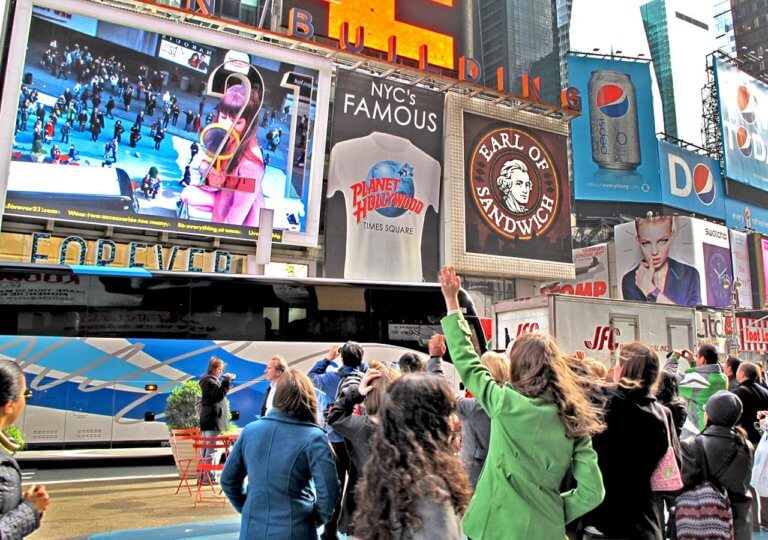
Measuring success has not always been easy or straightforward when it comes to advertising, especially Out-of-Home (OOH) advertising. In the past, it’s been difficult to properly understand how, when, where, and if an OOH campaign has reached the right people, let alone anyone. However, there have been a lot of technological advancements in the past 5 or so years that have helped advertisers to measure their campaigns effectiveness as accurately as possible. Things like GPS tracking devices, surveys, Beacon technology powered by Wi-Fi connections, QR codes, social media engagement, and sales impact are just a few ways of tracking an OOH campaign’s effectiveness. Businesses should take into consideration that measuring effectiveness begins well before you even start an advertising campaign. Defining clear KPIs are extremely important in ensuring that the goals of the campaign can and will be met. The following are some trustworthy measurements to ensure that your OOH advertising campaign is not only effective but will also allow your business to use the measurements as stepping stones for future campaigns.
Monitoring sales
The simplest and probably most obvious way to measure OOH effectiveness is to monitor the sales of your business before, during, and after you’ve executed your OOH campaign. If everything goes according to plan, you’ll see a spike in your sales after customers have been exposed to your OOH ad. It’s not recommended that this be the only way you measure the effectiveness of your campaign. Although seemingly straightforward, it isn’t the most accurate way to measure effectiveness. If your business is running more than one ad campaign at the same time, it’s almost impossible to tell if that one specific OOH ad campaign is the one that is driving sales. It would be in your company’s best interest to use a combination of metrics to measure effectiveness and ROI including monitoring sales.
Impression measurements
There are a lot of factors that go into measuring the success of an Out-of-Home (OOH) advertising campaign. Paul Inman of 75Media put it best in his article when he said, “OOH is unique in that it’s capable of providing accurate measurements that are based on viewed impressions, which contrasts sharply with most other media that produce metrics on the basis of the estimated number of people who could have interacted with a particular ad.”. OOH has the ability to measure impressions, which essentially means estimating (with extreme accuracy) how many people will walk past your advertisement and see its content. Impressions can be measured by things like travel surveys, data modelling, and census data. In the past, this kind of data was based on memory, but now they’re becoming increasingly detail-oriented and can provide information in real-time. This is done through GPS and Wi-Fi signals. For example, motorists will often notice 48 or 96-sheet billboards positioned at roadsides and along busy commuter routes. This kind of data is extremely crucial for OOH advertisers as it helps identify the patterns and movements of their target audience.
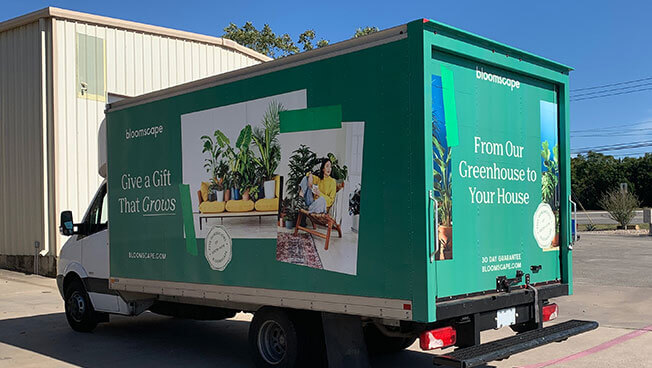
A truck-side advertising company called Movia measures OOH impressions using their beacon technology that tracks who, what, where, and when their ads are being seen and engaged with. This past summer Bloomscape, an online plant delivery service, teamed up with Movia to launch a holiday campaign that would reach consumers in a smarter, more targeted way. Movia wrapped 3 trucks with Bloomscape advertising that visited key suburban neighborhoods in Austin, Texas. The trucks achieved 10.8 million impressions in just 9 weeks! Moreover, because of Movia’s beacon technology, they were able to track and retarget consumers, which led to 800,000 online impressions. This was all made possible by using the impression measurements to retarget potential customers, and inevitably brought both awareness and major business results to Bloomscape.
DOOH and mobile integration
In the same vein, Digital OOH advertisements (DOOH) such as digital billboards and screens are becoming increasingly popular because of their ability to incorporate built-in sensors and cameras that can observe consumer behavior and measure engagement in real-time. Not only can it track impressions this way, but can also be paired with promo codes, social media accounts, QR codes, and links, that can track who follows the link or uses the promotional code. The ease in which this allows advertisers to track their target audiences is very enticing not only to advertisers, but also to consumers who are more willing and likely to engage with an ad that’s linked to the online world. According to a Nielsen report, 66% of smartphone users took some kind of online action after seeing an OOH ad. Thus, the integration of online advertising with OOH makes tracking effectiveness easier and more precise for advertisers.
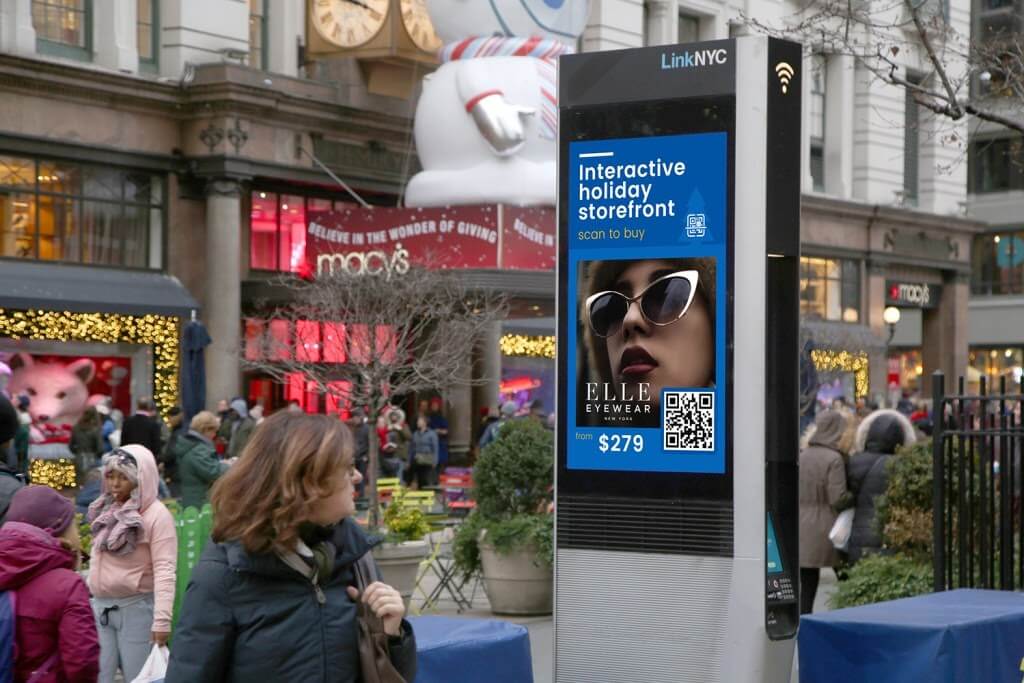
In November of 2020, Elle Eyewear launched what they called “digital storefronts” so that people could safely shop for eyewear during the pandemic. QR codes were placed on kiosks, bus shelters, digital walls, and digital urban panels in order to reach consumers. All that you had to do was scan the code on the ad and you’d be transferred to an online website that would give you all of the eyewear options you could possibly want. The use of QR codes is making it extremely easy and efficient for people to shop, especially during a global pandemic and at a time when practically everyone has a mobile device that’s connected to the internet.
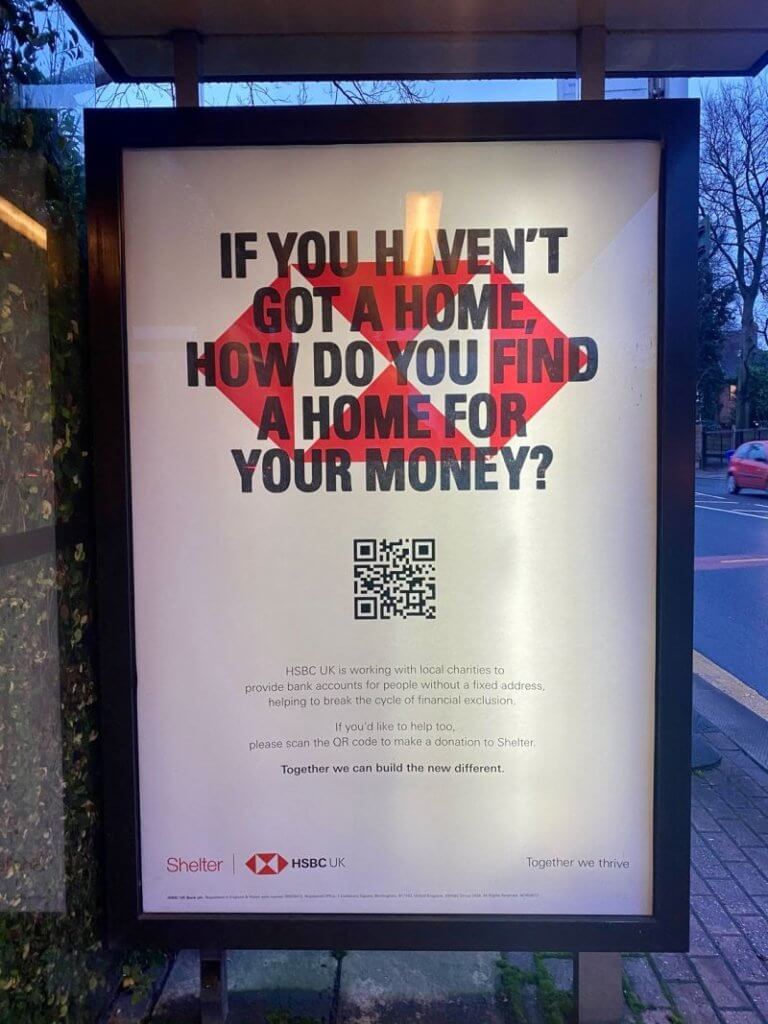
Similarly, HSBC, one of Europe’s largest banks, put out a call-to-action campaign last year asking for donations via a QR code. The bus-stop ads displayed the campaign’s bold headline, “If you haven’t got a home, how do you find a home for your money?” a clever and eye-opening response to the homeless population in Europe. The scannable QR code was placed right below the headline, at eye level making it engaging and simple for passersby to take notice of the ad and encourage them to donate. This campaign is a perfect example of how incorporating QR codes into any ad can be natural and easy to use.
Redirecting tactics
Including your company’s website onto all of your OOH ads is a very smart way to track effectiveness. From there, you can leverage Google Analytics to measure the number of people who visit your website, which provides an incredibly accurate gauge of the reach that your campaign is having. Similarly, including social media hashtags are another way to measure your campaigns success. Assign a campaign specific hashtag to your ad and when people start using it and engaging with it online, you’ll immediately be able to measure the size of the engagement. You’ll also be able to measure the demographics of those interacting with your ad, narrowing the scope of your target audience.
Geofencing is about to be HUGE
In recent years, the use of geofencing has changed the game for measuring OOH. Geofencing delivers corresponding mobile ads to people’s smartphones who move within the targeted hyper-local areas. Geofencing is great for identifying audiences that are in close proximity and are engaging with your ad. You can then retarget your campaign in order to show those same audiences your contextually relevant products and services.
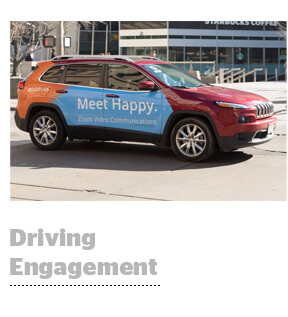
Zoom Video Communications, the B2B web and video conferencing company, experimented with car wraps around neighborhoods in Denver to boost their engagement. In two months, the campaign generated 18.5 million OOH impressions proven by the geofenced zones that the cars drove within. People that entered the zones would receive ads on their phones for Zoom Video. After gathering the impressions, Zoom was able to deliver retargeted digital display ads to roughly 120,000 people through the offline exposure.
The Last Word
The best way to measure the effectiveness of any OOH campaign is to combine the tactics that I’ve outlined above. By linking all of them together, you’ll be able to see just how effective your OOH ad campaigns are. Then after combining all the information that you’ve gathered, you will be able to further fine-tune your OOH campaigns so that they are as targeted and as lucrative as possible.


